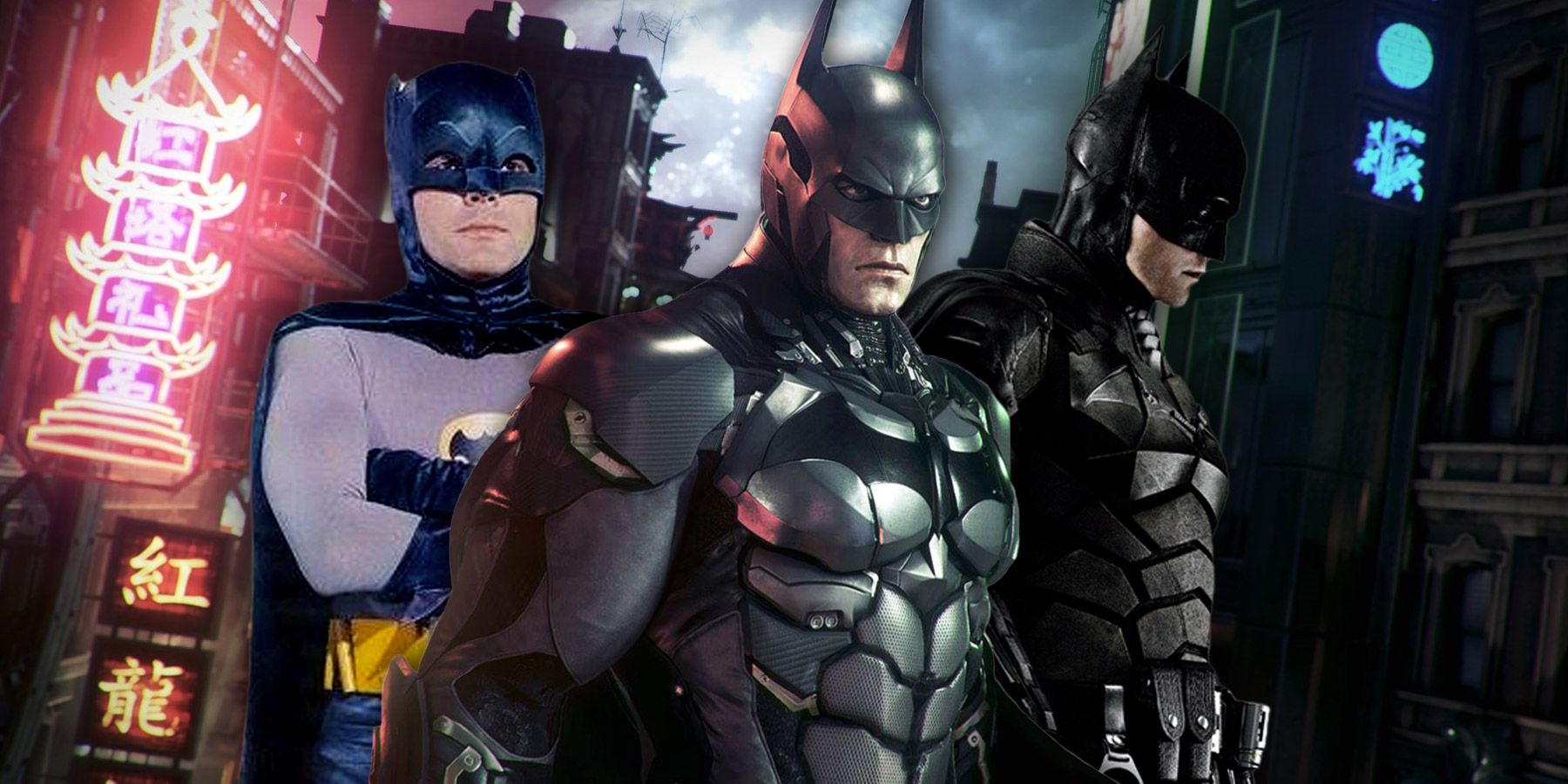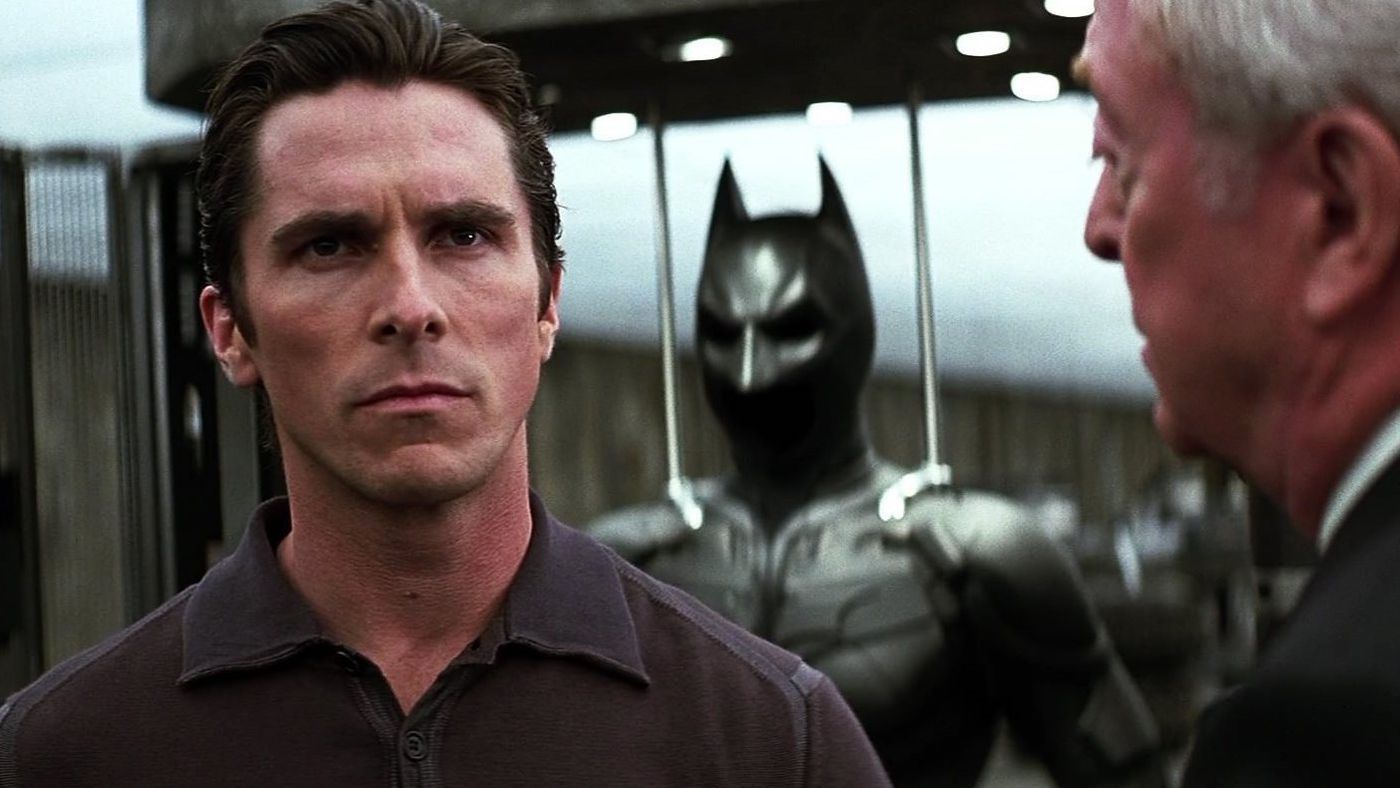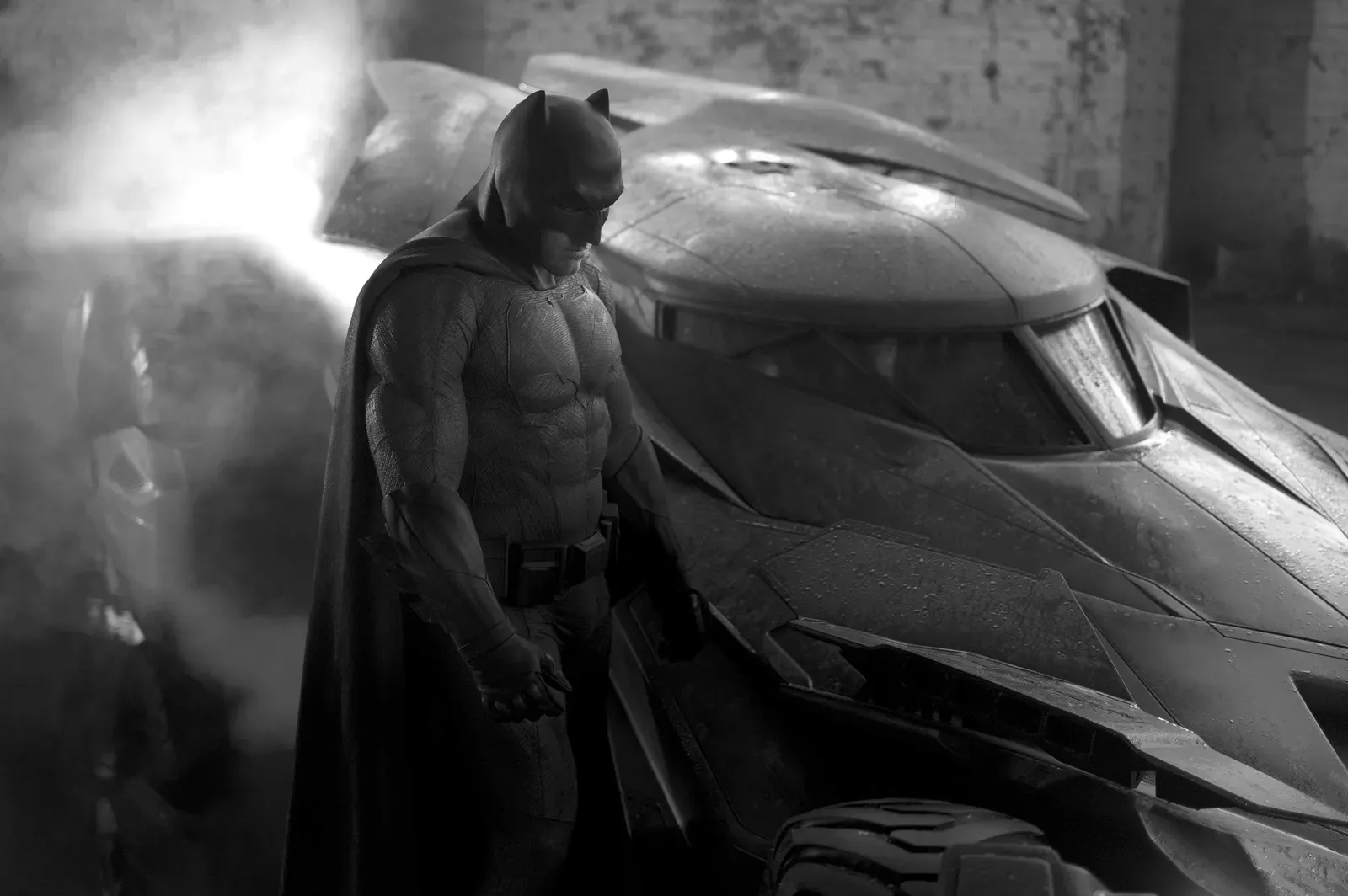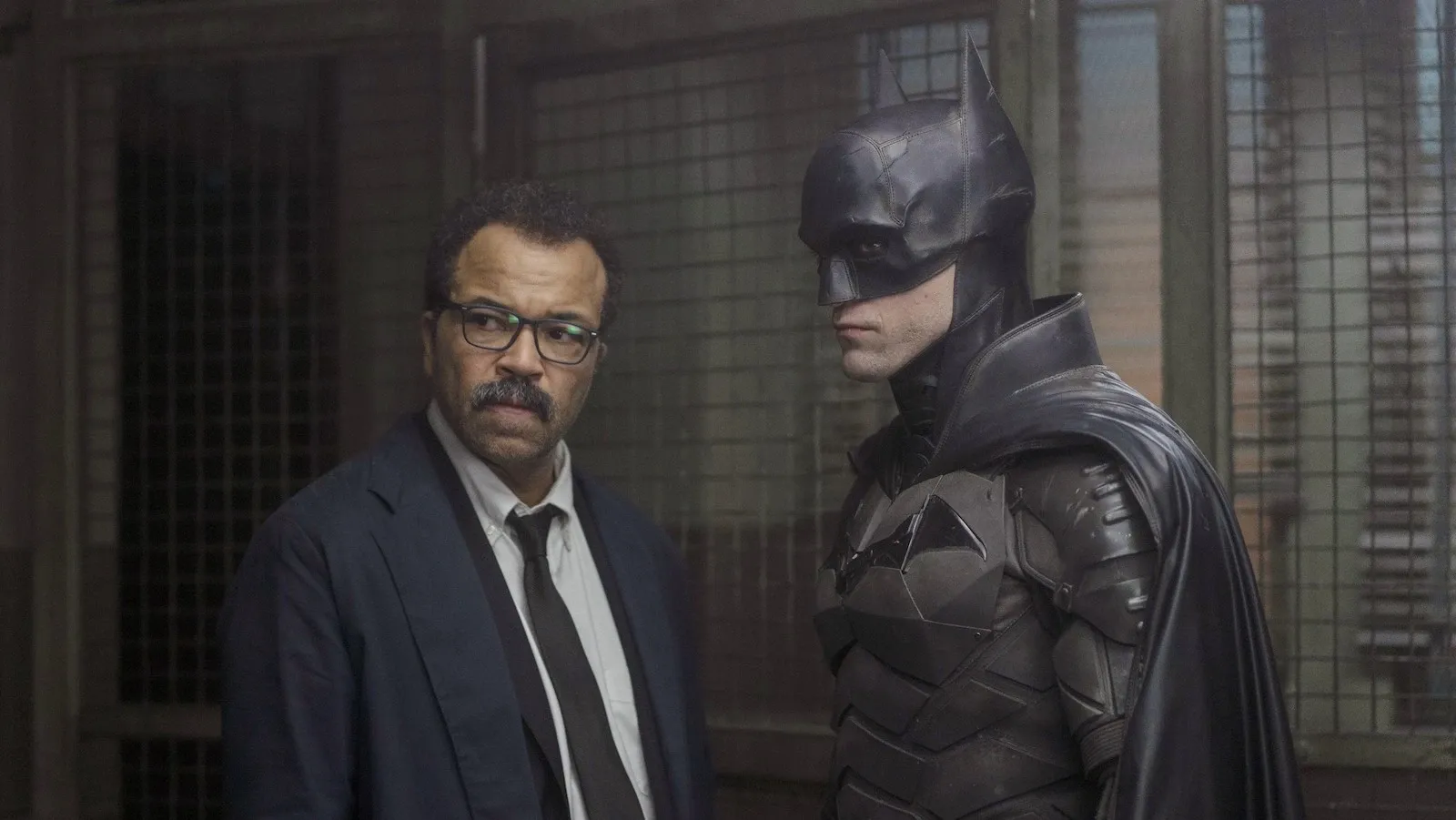To some, the Batman depicted in Rocksteady and WB Games Montreal’s Batman: Arkham franchise is the definitive iteration of the character. Whether it is because of Kevin Conroy’s seminal work as the character, or the gameplay and characterization throughout Batman: Arkham Asylum, Batman: Arkham City, Batman: Arkham Origins, or Batman: Arkham Knight, there are many reasons why this Batman may be a beloved fan-favorite. Bruce Wayne experiences multiple changes in his gameplay and characterization between each Batman: Arkham installment, showing some consistent development.
It is clear seeing how Batman’s iteration is compared between each game in the franchise, but it is also interesting to see how Rocksteady’s Batman compares when he is sized up against the Bruce Wayne’s and Batmen who have been featured in live-action films. Lewis G. Wilson, Robert Lowery, Adam West, Michael Keaton, Val Kilmer, and George Clooney aside, the Arkham Batman holds up intriguingly to live-action’s modern Batmen from the last three iterations of the character.
Rocksteady’s Batman Compared to Christopher Nolan’s Batman
Nolan’s Batman Begins depicts Bruce Wayne’s origins as a caped crime-fighter in Gotham City, and as early as his stealth and mixed martial arts training under the tutelage of Henry Ducard, also known as Ra’s al Ghul. In terms of tone and atmosphere, Batman Begins is most comparable to Batman: Arkham Asylum. This is a Batman who is stoic and collected, despite Nolan’s Batman only having just made his presence known as Batman before he is compromised by Scarecrow’s fear toxin. Each Batman experiences horrific imagery after being exposed to Scarecrow’s weaponized hallucinogen, making for some of the most memorable sequences in Batman: Arkham Asylum.
Batman does not have much personality or characterization in Batman: Arkham Asylum beyond his insistence that Harley Quinn is unintelligent, whereas there is more motivation and inexperienced yearning to fight crime in Nolan’s iteration of the character. The sequels to Batman Begins, The Dark Knight and The Dark Knight Rises, then concentrate their efforts on their portrayals of Heath Ledger’s Joker and Tom Hardy’s Bane, more so than Christian Bale’s Bruce Wayne. But as the sequels progress, so do Batman’s armor and technology.
This is echoed in the Batman: Arkham franchise as well, where each game debuts a new gadget or function to an existing gadget that improves traversal and combat. Nolan’s Bruce mourns Rachel Dawes and becomes romantically connected with Anne Hathaway’s duplicitous Selina Kyle, while Rocksteady’s Bruce is only portrayed as having a romantic interest in Batman: Arkham Knight with Selina, who he remains consistently uninterested in as he puts the needs of Gotham above his own. Nolan’s Batman does, however, demonstrate a propensity for stealth that his other live-action counterparts do not. This is likely his most succinct comparison to Rocksteady and WB Games Montreal’s Batman, who often resorts to gargoyle perches and other stealthy means of silently subduing enemies, even with a nod to an inverted takedown in Batman Begins.
Rocksteady’s Batman Compared to Zack Snyder’s Batman
Snyder’s Batman v Superman: Dawn of Justice depicts Bruce Wayne as an experienced crime-fighter of over 20 years in Gotham, and who has grown to become more ruthless and violent in his pursuit of criminals since the arrival of Superman and the catastrophic destruction of Metropolis. Snyder’s Batman is much more emotionally driven than Rocksteady’s Batman, who only shows emotion in Batman: Arkham Origins, the one game that was not developed by Rocksteady.
In terms of how Rocksteady’s Batman is portrayed in gameplay, the character’s ferocity is tempered with logical explanations for why Batman’s enemies are not murdered in cases where they otherwise would be, such as Batman: Arkham Knight’s Batmobile having an electric charge dispatch any enemies who make contact with it, instead of simply having them be run into. That said, there are a fair share of instances where Batman is able to spin-throw an enemy off a rooftop or into a body of water that they are not retrieved from thereafter.
That is more of an idiosyncrasy with the game’s AI and gameplay than it is an indication of Batman’s mercilessness. Snyder’s Batman purposefully brands petty criminals who will then be marked for assassination in Blackgate’s general population. Further, Snyder’s Batman causes extensive destruction and death while in the Batmobile, as well as allows mercenaries to be blown up by grenades or set ablaze with a flamethrower, so it is clear that he no longer cares whether criminals die by his hand or not. It can be argued that Rocksteady and WB Games Montreal’s Batman shares this nihilism, but the games themselves do not seem to encourage that characterization. Instead, Snyder’s Batman is an exceptional strategist with combat expertise that marries gadget efficiency with close-quarters crowd-control.
Snyder’s Batman v Superman features the use of a grapple gun to reel an enemy in for a clothesline strike, a simple batarang throw, and a Disruptor gun to sabotage enemy firearms. Each of these gadgets are employed in Batman: Arkham Knight to the same effect, and the dynamic manner in which players can take down foes is as tactical and satisfying as in Snyder's iteration of the character.
Rocksteady’s Batman Compared to Matt Reeves’ Batman
Reeves’ The Batman depicts Bruce Wayne as a reclusive insomniac whose existence is wholly subsumed by his vigilante persona. The Batman is most comparable to Batman: Arkham Origins for multiple reasons, the least of which being that Batman is established as a vigilante in his formative years and without many established super-villains, but without the need for a rehashed origin story of how Bruce’s parents were murdered.
Reeves’ Batman has an intimate and trusting relationship with Police Lieutenant Jim Gordon, while the rest of the GCPD fails to share their enthusiasm for the vigilante. This relationship is tested thoroughly in Batman: Arkham Origins, where Batman and Gordon have a tumultuous relationship in the beginning and Bruce undergoes perhaps the most distinct personality and developmental changes in the franchise as he learns to trust Gordon and the GCPD, requesting their assistance in apprehending the Joker.
Perhaps the most distinctive difference between Reeves’ Batman and Rocksteady’s Batman is that the former is essentially bulletproof, while the latter is incredibly susceptible to gunfire. Like Snyder’s Batman, Reeves’ Batman is also well-versed in crowd-control, where the character performs countering parries that closely mirror those of Rocksteady and WB Games Montreal’s own parry mechanics.
Reeves’ Batman debuts cape-gliding as a method of traversal with the wingsuit, which is far more elementary than that of the cape-gliding Lucius Fox introduced in Batman Begins, and his gadgets are overall more rudimentary as well. It will be interesting to see how well Batman’s latest iteration will shape up in The Batman’s sequel, and if any other striking comparisons to Rocksteady and WB Games Montreal’s Batman: Arkham franchise will be made evident.




